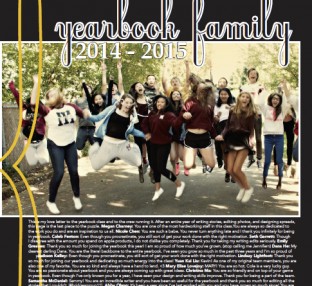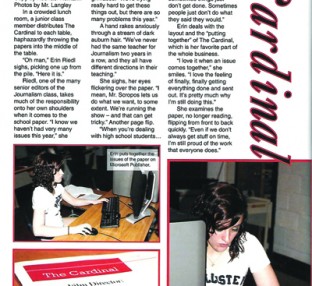
Pictures are worth a thousand words, but the stories within them are incomplete without captions. Help out your yearbook captions by watching the video “A Simple Approach to Great Captions” and using Walsworth’s caption-writing lesson.


Pictures are worth a thousand words, but the stories within them are incomplete without captions. Help out your yearbook captions by watching the video “A Simple Approach to Great Captions” and using Walsworth’s caption-writing lesson.

Are your readers actually reading your yearbook? In many cases, the answer is “no,” and with good reason.
Most yearbooks are not written to be read. Yearbook copy tends to be a collection of non-compelling facts put together too lazily and too hastily, without regard for the reader. While that is a harsh indictment, it is often true and it is nothing new.
Hey, you worked hard on the yearbook — wouldn’t it be nice if people read it? Instead of dull and lifeless facts, stories should be a collection of interesting people caught in defining moments — moments that reveal character and personality.

Trying to come up with an interesting idea for a yearbook feature story? Sometimes it can be difficult coming up with a unique angle, but the fact that you’re trying means you’re on the right track! “A yearbook shouldn’t be full of topics,” according to Brady Smekens, former adviser of the Deka yearbook staff at Huntington North High School, Huntington, Indiana. “Rather, it should tell the story of students. In the process, the topics get covered.” The list of story ideas on this page will help editors start brainstorming for coverage unique to their school and the current year.

Heather Rollins and Brandon Lee of the Masterpiece staff from Walsworth Yearbooks school Bak Middle School of the Arts in West Palm Beach, Florida, have been named Finalists by the National Scholastic Press Association (NSPA) in its 2016 Story of the Year contest. Rollins and Lee were named Finalists in the Diversity Story category for…

Coming up with an interesting angle for a yearbook story can often be a challenge. Either the angle is too vague, or too specific, and it’s nearly impossible to cover the story. Finding an angle that’s just right will help with writing the story later on. But many writers find themselves stumped when it comes…

Your yearbook’s colophon, typically appearing near the back of the book, provides the reader with some important information. The colophon indicates how your yearbook was produced and includes the name of your printing company, the number of copies, type of paper the book was printed on, cover specs, the software your staff used to produce…

Many yearbook staffs have already begun dealing with their first page deadlines of the year, with even more submission dates still to come. Meeting deadlines and good proofreading are equally important. You can’t have one without the other if you want to have an outstanding yearbook. Fortunately, we have some resources here at walsworthyearbooks.com that…

Student leaders at summer yearbook workshops struggle with how to get their staffs to write quality copy. Part of the problem with writing copy involves content with boring generalizations, ho-hum quotations, lists of activities and participants, just statistics or records, and the cliché “we had a great season” (even though the team lost every game).…
If your staff members need a little extra help with writing an effective headline, caption or story, Walsworth’s writing professionals will offer our special talents on Oct. 9. We are calling this day Get Your Copy Right Day as part of National Yearbook Week.
Here are a few activities for the classroom to bring the group back together as one unit and get the brainstorm fires burning again to generate copy ideas for this year’s book!